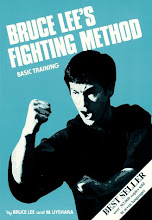By Adam Hsu
Mind expansion, the Long Fist way!
In the history of Chinese martial arts, long fist is a style of major influence and power. In the curriculum of my own schools, it also plays a major role. We teach two long fist branches: jia men and mei hua. Due to the way traditional wushu was handed down in older times, training structures were never clearly composed or documented. Yet, a basic pathway does exist which can be traced within these systems.
Jia men chang quan
Our jia men chang quan system ("Islamic style," named for the the Chinese Muslim ethnic minority community from which it originated) contains three forms, in contrast to other systems with ten or more. The training begins with the tan tui (springing leg). Tan tui very clearly teaches students the fundamental grammar of kung fu movements, postures, techniques, and mindset. It introduces a variety of punches, palm strikes, kicks, and blocks. Repetition of attack/defense combinations and evenness of balance --each movement is practiced on both right and left sides-- are also built into this form, ensuring that students receive a thorough grounding in the essential building blocks of kung fu.
Learn one movement, and you probably have learned ten. For example, students work hard to achieve proper alignment and structure in the first movement of tan tui's line one. Later on, they might study sword. Thrust forward with the weapon instead of the bare fist and turn the rear fist into sword fingers: the basic posture is already their old friend. The high block fist or palm placed above and to the front of the head that often accompanies a saber sweep is found in line five of tan tui. And placement of arms in the taiji quan movement called "fen jiao" is practiced in both lines seven and eight. You do not have to relearn anything you struggled to master in chang quan, if you take up weapons or branch out to other styles. In fact, long fist gives students a jump-start into the new training.
After tan tui, students progress to the pao quan (cannon fist). This form is long, challenging, and eats up space. It often changes directions and covers lots of ground; the movements themselves are also more complicated and somehow larger, occupying more of the air around our bodies. Where tan tui moves in lines, pao quan movements are more squarish.
Movements in the third form, cha quan, are more rounded, curved, and continuous. Many are not as sharply defined as pao quan's. They are ambiguous, complex, and very rich: filled with potential for multiple attacks and defense.
Mei hua chang quan
Our mei hua ("mei flower") chang quan system also uses three forms. The first is the mai fu quan, which means "insidious" or "ambush" fist. This implies something is hiding or under cover. Indeed, an important factor in the mai fu training is the placement of rear hooks, which must be carried away from the body and angled correctly. The form contains approximately twelve postures with hooks, each conveniently having a different stance, angle, and arm placement. These varied positions provide students with an ideal opportunity to practice posture training, an exercise both physical and internal, and an important element of all kung fu systems. Mai fu students hold each hooked posture, counting their breaths, and sinking their internal energy.
The second form, si ci tang (cross form), pushes students to confront movement, energy, attention, and intention simultaneously to opposite angles. Its movements feel strange; they do not always progress in ways that seem logical. It is intentionally constructed to force the development of minor muscles and infrequently used joints and tendons. Mentally, it tries teaching us to send awareness and power to all different directions.
Following on the mai fu and si ci levels of practice, the tai zhu form then teaches students to issue short power. Some movements are only half-way or just not very long --unlike the previous training, all fists don't have to return back to the waist. More chan si jing ability is also needed to make the tai zhu good.
Our job is to clarify the training purpose of these long fist forms. Our mission is to decode the traditional forms, reveal the meaning hidden within, and share this with our students at a pace and gradient of difficulty appropriate for their levels. Therefore, in our curriculum students are corrected in a systematized step-by-step manner and each form has three levels of practice and requirements.
Weapons
I personally don't know any style that prepares students for weapons better than long fist. Earlier I discussed one reason for this, but there's an additional factor at work here. The more specialized a style is, the more limited its ability to contribute to weapons practice. One that focuses mainly on the legs won't give students much preparation for the sword. A style emphasizing palm strikes is compatible with the saber, but how about spear, whose basic nature and flavor are thrusting?
In my curriculum, by the time students begin weapons, they have approached the intermediate levels. At this point, the basic groundwork has been laid and, though each weapon has its own challenges, students find the classes are lighter in feeling and very enjoyable.
end of pt 1
Speed
Speed in fighting depends not
just on your hands and feet in swiftness..
But other attributes such as
nontelegraphic moves and awareness.
Speed in fighting is to hit
your foe without yourself being hit.
This can only be done by hours
of practice and being completely fit.
Speed in fighting is no good
without the power that goes with it.
You are here: Home > longfist pt 2 > Mental Training: Long Fist's Secrect Weapon Developing Generals and CEO's of Tomorrow
Tuesday, January 2, 2007
Mental Training: Long Fist's Secrect Weapon Developing Generals and CEO's of Tomorrow
Labels: longfist pt 2
Subscribe to:
Post Comments (Atom)








0 comments:
Post a Comment